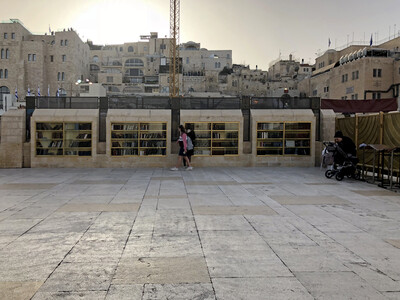
Jerusalem
Upon entering the Old City of Jerusalem, I was informed by my guide that it was divided into four quarters. And as we meandered down cobbled streets and arched alleyways, he constantly pointed out when we had entered or existed a different land. The shifts happened quickly. At one moment, we were firmly in the Armenian quarter. But just a few paces forward, suddenly we were standing in the Christian quarter. Another few strides, and we were squarely in the Jewish quarter. But nowhere could I see physical boundaries. Architecturally, nothing seemed to be marked by a specific faith or culture. While these three quarters were not equally divided, they appeared to be entirely stitched together. There were Jewish houses next door to Armenian houses that were next door to Christian houses, all of them appearing quite the same.
The Muslim quarter, by contrast, was clearly separate from these three, and situated on the other side of the hill.
As we approached the Western Wall, I noticed a more formal or serious aura than I had in the other areas of town. I also noticed another division: this time of gender. Men and women were praying in their own separate areas. A real divider—in the form of a wall—marked who was allowed to pray where. As people stood facing the ancient limestone wall, praying and reading from their prayer books, I felt a reverence as I heard the hum of their words. They seemed to form a sort of spiritual library in what has long been the holiest of places for the Jews. Yet this division of the genders is not so ancient. In fact, it is as recent as the middle of the twentieth century—a result of the war Six Day War.
This is what war of any sort does, it divides and introduces an element of fear. The many ethnic and religious subgroups that exist within the Jewish community today emerged over centuries and are categorized by different names depending upon the different sects and countries in which they took root. At the Wall, Jews of every denomination and practice—from the Orthodox (ultra- or Haredi, central or modern) to Conservative to Reform, and even Reconstructionist—congregate and pray. The colors of their garments or their caps (kippas) signify their sect and make them seem superior or inferior, depending on who is looking. While these divisions are real, and often really divisive, there remains a shared culture based upon the common prayer books. And so, collectively, those who come to pray create a living prayer library.


